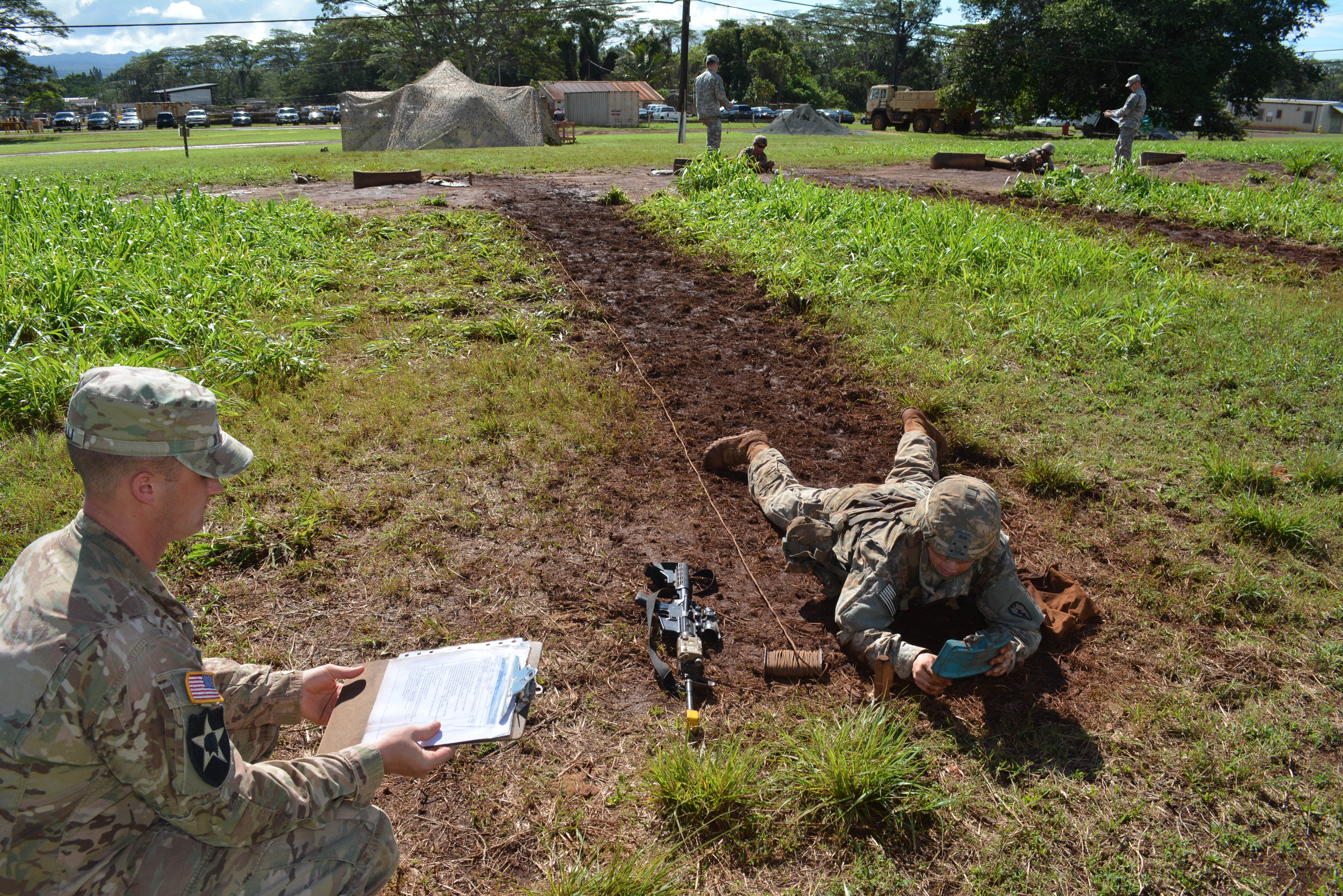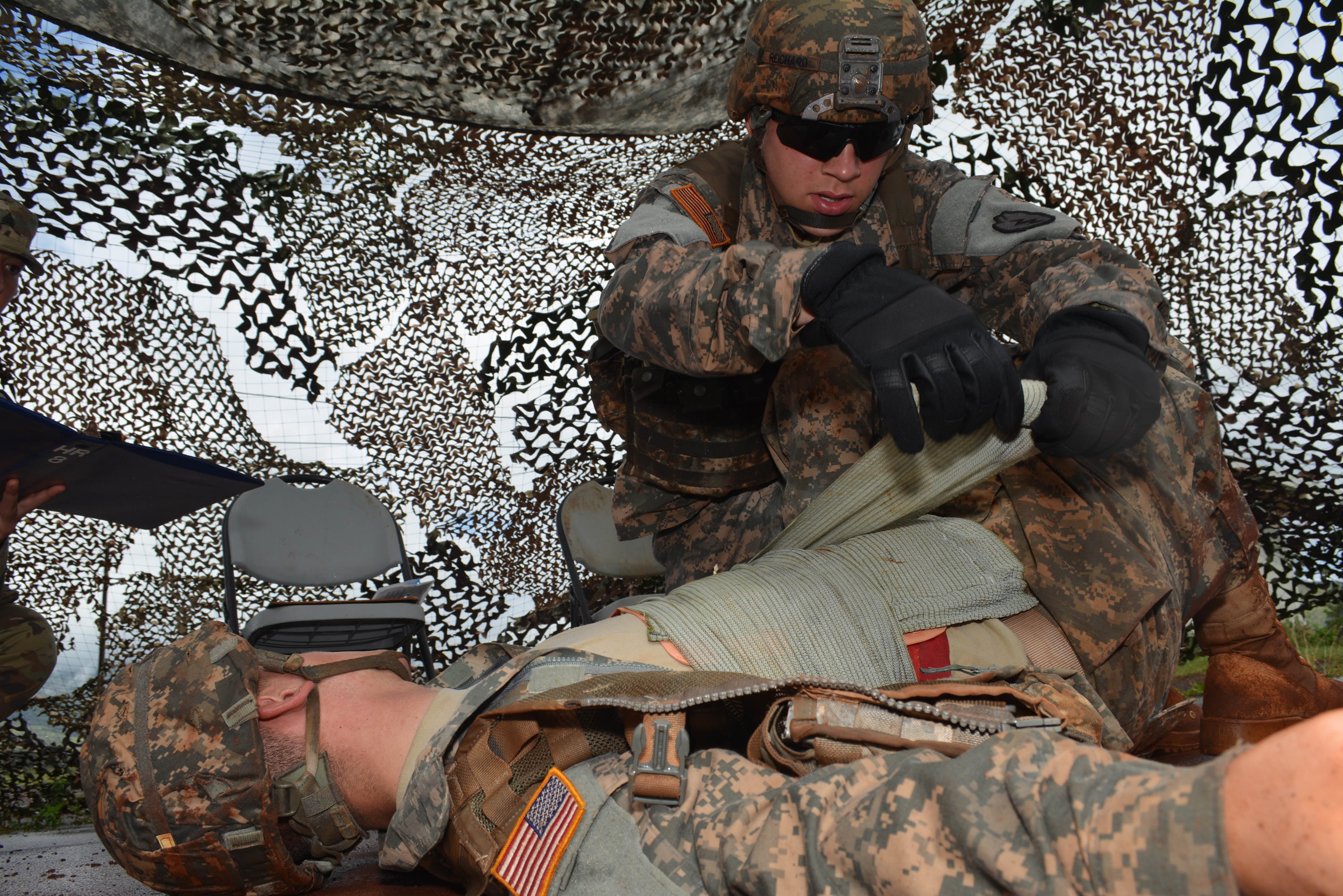Here's a look at the changes coming Dec. 1 to the Expert Infantryman Badge test, as explained by Command Sgt. Maj. Wilbert Engram, senior enlisted soldier for the U.S. Army Infantry School.
Higher PT scores
The Army Physical Fitness Test is the first event of the EIB testing week. Soldiers who fail to meet the minimum requirements are automatically dropped from the test.
The new test requires soldiers to score 80 percent or higher on each portion of the PT test.
The old test had a minimum standard of 75 percent.
Mandatory events
With the old test, units could design the test however they wanted, within broad parameters, in order to suit their mission. For example, the tests could vary among light, mechanized or Stryker units.
Under the new test, there will be fewer chances to vary the course and a list of mandatory tasks that all infantrymen must meet.
The Infantry School is grouping tasks into three testing lanes – weapons, medical and patrol.
EIB candidates must successfully complete 10 tasks for each lane. Many of the tasks will be identical for all units. Others may be selected from a master list.

A soldier low crawls 25 meters and emplaces an M18A1 Claymore Mine during the EIB Testing Aug. 26 on Schofield Barracks.
Photo Credit: Staff Sgt. Carlos Davis/Army
Each task is timed. Depending on the event, soldiers have anywhere from two to 10 minutes to successfully complete each one.
To help units, the Infantry School is developing a master study guide that will be available on its website. Before, units would produce their own manuals because they were allowed to design their own test, Engram said.
A closer look at the lanes:
• Weapons lane
Soldiers tackle the weapons lane on the second day of the test.
There are five mandatory tasks in the weapons lane: Assemble, disassemble and perform a functions check on the M4 carbine, M249 squad automatic weapon, M240B machine gun, and M2 .50-caliber machine gun, and prepare a range card.
Units can pick the remaining five tasks. Options include: showing proficiency on the M320 grenade launcher, M136 AT4, MK19 grenade launcher, M98 Javelin, M3 Carl Gustav recoilless rifle, or AK-47.
• Medical lane
Soldiers run through the medical lane on Day 3 of the EIB test.
Only one task is mandatory in this lane: soldiers must demonstrate the ability to complete a nine-line medevac request, Engram said.
Individual units can pick the other nine medical-related tasks.

A soldier performs first aid on a simulated casualty during EIB training on Schofield Barracks, Hawaii, on Aug. 25.
Photo Credit: Staff Sgt. Carlos Davis/Army
Options include: applying a pneumatic split; performing first aid to restore breathing; inserting a nasal esophageal tube; performing a needle chest decompression; administering first aid on an open head injury; performing first aid on an open abdominal wound; performing first aid for burns; applying hemostatic dressing; performing first aid to clear an object stuck in the throat of a conscious casualty; and controlling bleeding.
• Patrol lane
This takes place on the fourth day of testing.
Candidates must complete five mandatory tasks in this lane.
They are: adjust and direct fire; move under direct fire; submit and send a spot report; identify and employ hand grenades; and communicate by tactical radio.
Units can choose the other five tasks. Among their options: estimate range; protect from chemical and biological contamination using assigned protective masks; decontaminate yourself and your individual equipment using decontamination kits; identify topographic symbols on a military map; identify terrain features on a map; camouflage yourself and your equipment; use visual signaling techniques; and determine grid azimuth using a protractor.
New event
Like the old test, the fifth and final day of testing starts off with a 12-mile road march.
Soldiers must complete the march in under three hours. They carry 35 pounds of dry weight in their ruck sack, along with their weapons and personal protective gear, Engram said.
Like the PT test and land navigation, failure to complete the march within the allotted time results in a soldier being dropped from the test.
Under the old test, soldiers who successfully complete the road march are required to demonstrate their ability to disassemble, assemble and perform a functions check on the M4.
Under the new test, the Army is introducing Objective Bull, which is named after Technical Sgt. Walter Bull, who on March 29, 1944, became the first infantryman to earn the EIB.
Objective Bull is a 100-meter course. Soldiers have to navigate the course, where they will encounter a casualty. The soldier must then get the casualty behind cover, treat and stabilize the patient, get them on a Skedco, and move them 25 meters to a casualty collection point. Once there, the soldier must request extraction for the casualty.
The soldier has 20 minutes to complete Objective Bull.
"We have to demonstrate that we now have the will to fight and complete the mission," Engram said.
More graders
During the old test, one grader would grade a candidate on all 10 tasks in a lane. A unit conducting an EIB test needed a total of 70 personnel, 66 of whom had to be soldiers who had earned the EIB, Engram said.
The new test will feature a primary instructor and an alternate instructor at each task or station.
"Every time a task is tested, the soldier will get a new grading cadre," Engram said. "They are specifically trained to make sure that soldier goes in a specific sequence."
Adding more graders removes subjectivity from the test and allows graders to focus on the specific tasks they're assigned to grade, Engram said.
The new test requires 113 personnel. Of those, 109 must be EIB holders.
Fewer no-go chances
With the old test, soldiers "could fail two tasks, not have to retest, and still potentially get the EIB," Engram said.
The new test requires candidates to receive a go on each task.
"If you fail a task, you'll be told to stop, go back to your holding area, and have the opportunity to come back within an hour to retest on that station," Engram said.
A second no-go on that same task results in the soldier being dropped from the test completely, he said.
In all, a soldier can receive up to two no-gos throughout the EIB test. That candidate then becomes a so-called "blade runner" who is at risk for elimination if he receives an additional no-go, Engram said.
More training time
The new test gives units and soldiers get one week to set up, two weeks to train up, and one week to conduct the test. The old test ran on a similar timeline, but soldiers only had one week to train up before the testing.
Soldiers who fail to earn their EIB can retest as often as they want or need, Engram said.
Michelle Tan is the editor of Army Times and Air Force Times. She has covered the military for Military Times since 2005, and has embedded with U.S. troops in Iraq, Afghanistan, Kuwait, Haiti, Gabon and the Horn of Africa.





